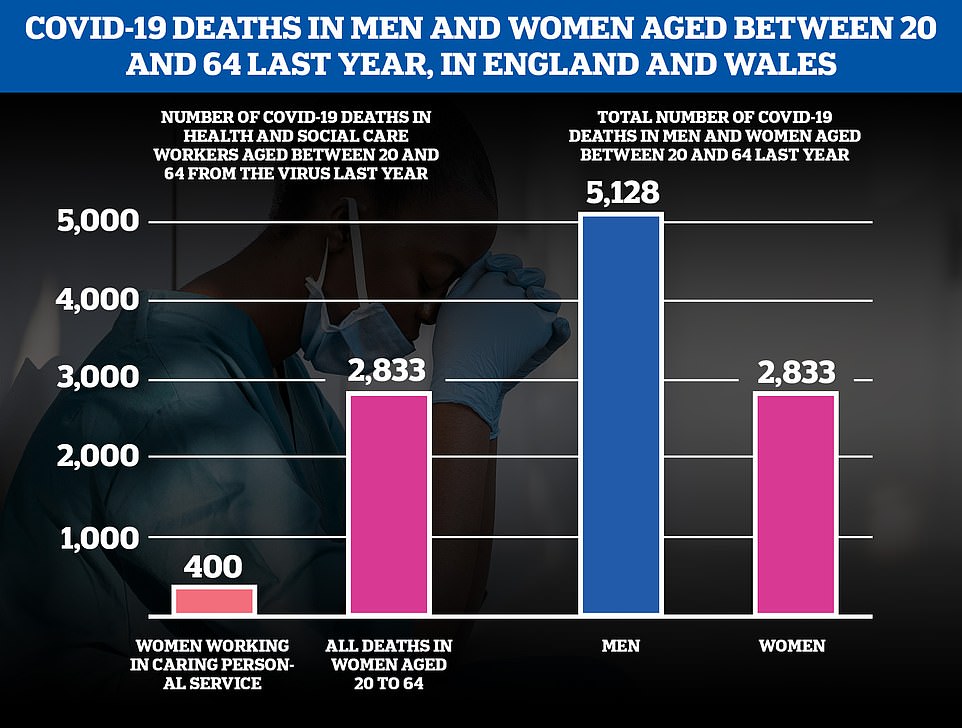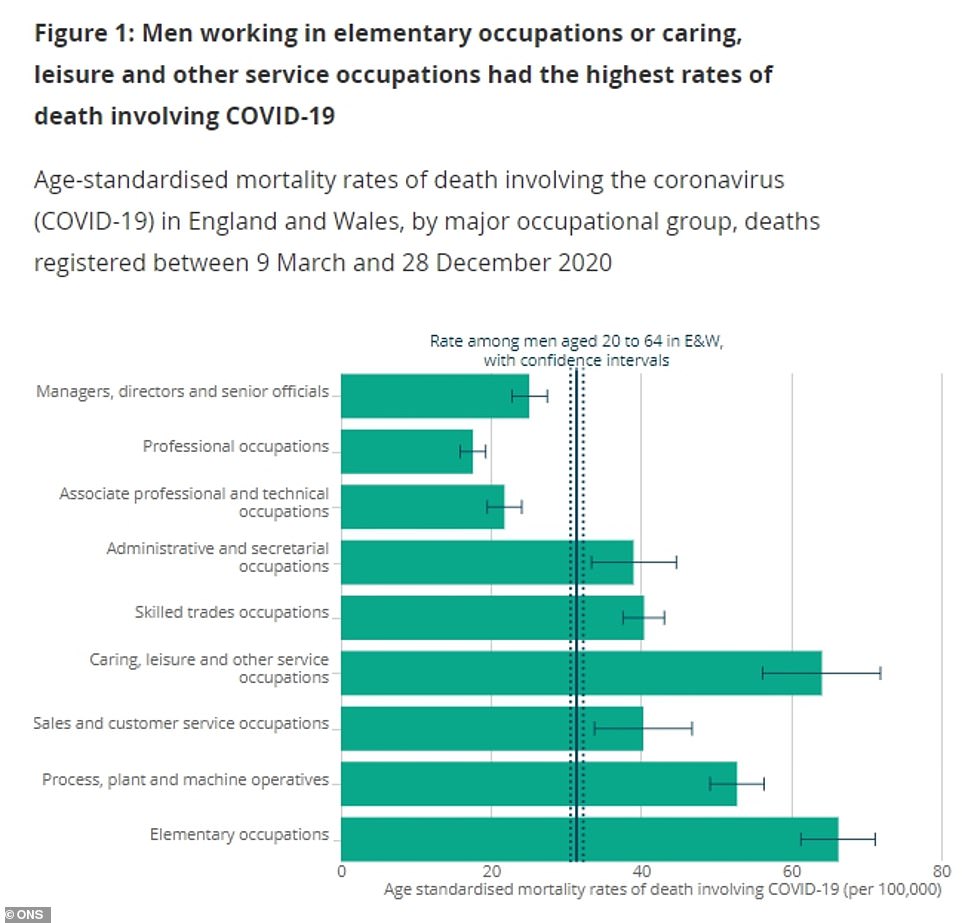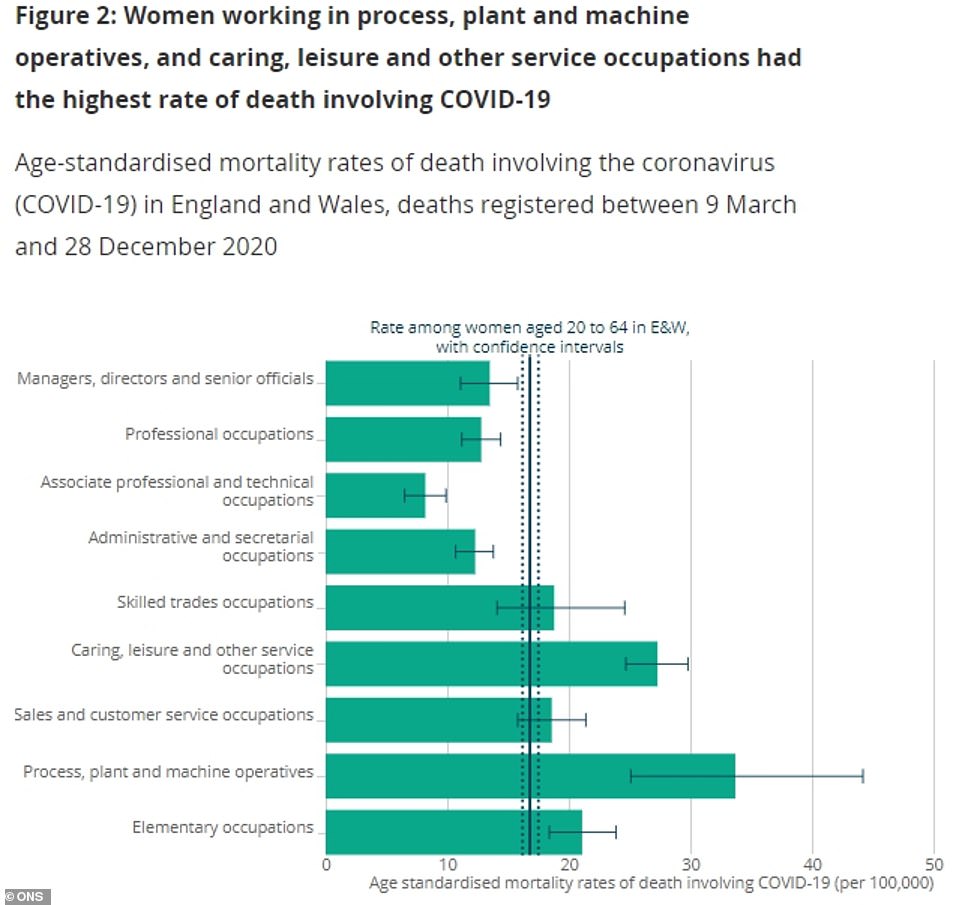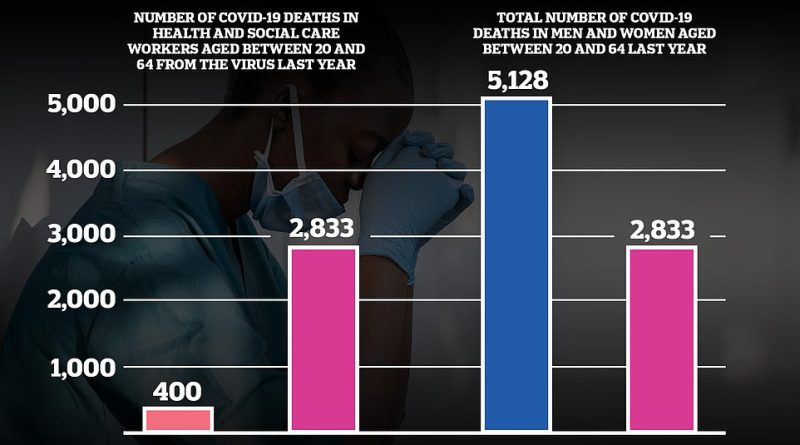School staff are NOT more likely to die of Covid-19 than the general population, ONS survey reveals
School staff are NOT more likely to die of Covid-19 than the general population, ONS survey reveals after 139 were killed by the disease in all of 2020 – and it found working-age men are nearly TWICE as likely to die as women
- Office of National Statistics (ONS) says 139 teachers aged between 20 and 64 have died from Covid-19
- Statisticians say this is below the national average for all professions, amid calls for schools to reopen
- They also revealed fewer than 8,000 deaths were registered among those under 65 overall last year
Advertisement
Teachers are not more likely to die from coronavirus than the general population, official figures reveal, amid mounting calls to get children back behind their desks before the Easter holidays.
A report by the Office for National Statistics (ONS) shows 139 teachers in primary schools, secondary schools and universities aged between 20 and 64 in England and Wales died last year after catching the virus.
Statisticians said this was below the national average of 31 and 16 fatalities per 100,000 people in men and women respectively, as they had a rate at 18 and 10.
The report also revealed almost twice the number of working-age men had died from the virus than women by December 28, revealing a stark disparity between the two sexes.
But fewer than 8,000 deaths have been registered among those under 65 overall, one twelfth of the numbers recorded for those over retirement age.
Boris Johnson today promised children would be able to return to the classroom ‘as soon as possible’ but failed to commit to a date – amid fears schools will have to remain closed until April.
Senior Conservatives are up in arms about the long-term damage to the prospects of the youngest in society – demanding an immediate route map for how classrooms can get back up and running.
But Commons Speaker Lindsay Hoyle has rejected a request to summon Education Secretary Gavin Williamson for a grilling this afternoon, despite expectations that he will announce that schools cannot return after the February half-term in the coming days, and possibly not for many months.
There have been mounting calls for teachers to be bumped up the vaccinations list to help allow schools to open their gates sooner, with Health Secretary Matt Hancock saying they had a ‘good case’ for being next in line.



The ONS report also looked at deaths in secondary school teachers, because this was the only category where enough had occurred to allow them to calculate a death rate.
It found no statistical difference between the likelihood of dying from the virus for those working in these settings compared to the general population, further suggesting pupils should be allowed to return to the classroom.
There were 52 deaths in secondary school teachers last year, they said. This gave a death rate of 39.2 per 100,000 in males, and 21.2 per 100,000 in females.
The report also revealed that 5,128 working-age men had died from the virus by December 28, almost double the 2,833 deaths registered in women of the same age over the same period of time.
Postmen, cleaners and security staff had the highest number of deaths from the virus last year, the ONS said, with 692 deaths in this category.
They were followed by lorry and bus drivers and others working in transport, where 608 fatalities were recorded.
There were 594 deaths in care workers, and 364 in administrative occupations.
Ben Humberstone, the head of analysis and life events at the ONS, said: ‘Today’s analysis shows that jobs with regular exposure to COVID-19 and those working in close proximity to others continue to have higher COVID-19 death rates when compared with the rest of the working age population.
‘Men continue to have higher rates of death than women, making up nearly two thirds of these deaths.
‘As the pandemic has progressed, we have learnt more about the disease and the communities it impacts most.
‘There are a complex combination of factors that influence the risk of death; from your age and your ethnicity, where you live and who you live with, to pre-existing health conditions. Our findings do not prove that the rates of death involving COVID-19 are caused by differences in occupational exposure.’


